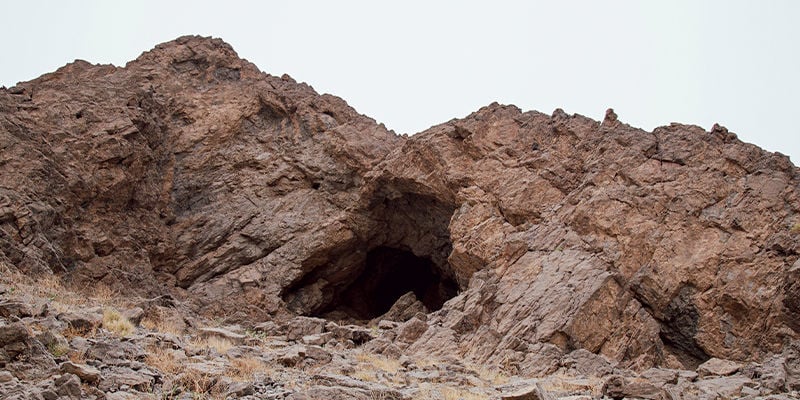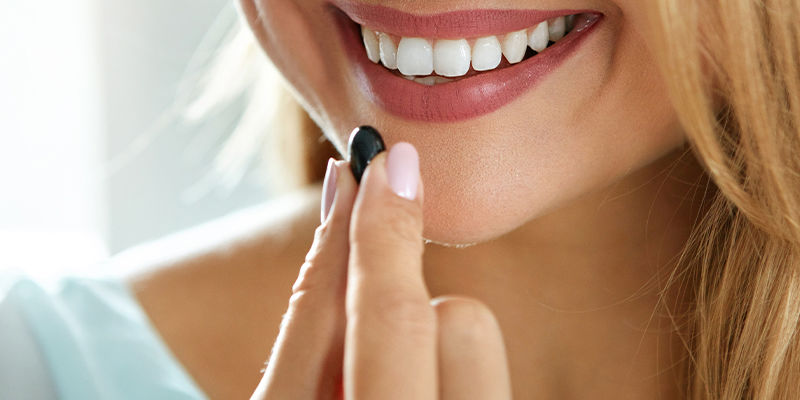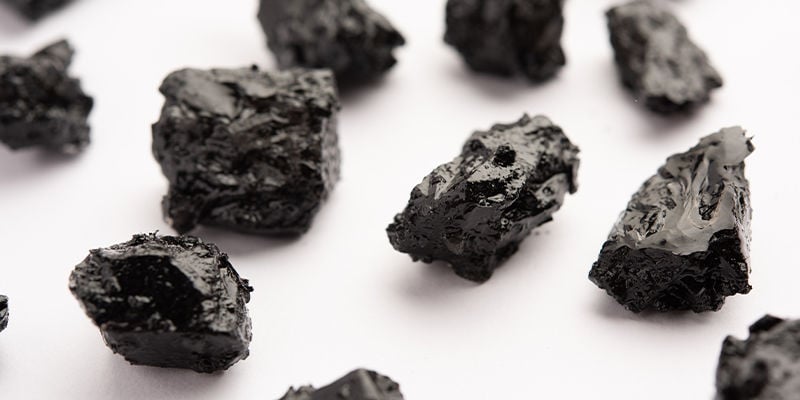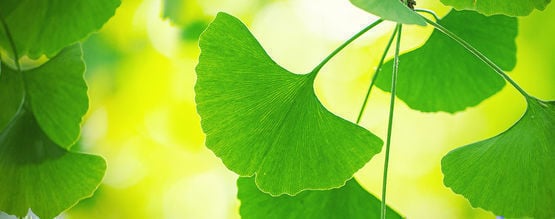
What You Need to Know About Shilajit
Shilajit is a tar-like substance that has long been included in Ayurvedic medicine. With many possible effects, shilajit is still used today. Available in a wide range of consumption methods, there's never been a better time to check out what shilajit can do.
Noted for its variety of holistic applications, shilajit has been used for well over 4,000 years. But with the advent of convenient supplement capsules and vitamins, does shilajit still have a place in the modern world? In this article, we take a look at everything you need to know about this tar-like substance.
What exactly is shilajit?

As a common feature in Ayurveda, shilajit, otherwise known as “conqueror of the rocks”, “destroyer of weakness”, or simply “mumijo”, is a black/brown, tar-like exudate from high mountain rocks. Most often found in areas such as the Himalayas, Afghanistan, and Mongolia, the viscous shilajit is collected and then used in powdered or liquid form.
The role of Ayurvedic medicine
Dating back 5,000 years, Ayurveda is a type of traditional medicine that utilises a variety of herbs and spices to treat the mind, body, and soul holistically. Some typical Ayurvedic remedies include the likes of ashwagandha, turmeric, and cumin, to name a few. It's thought that harnessing and combining herbs and spices can provide potential benefits such as:
- Aiding digestion
- Enhancing vitality
- Detoxifying the blood and body
- Helping with weight loss
- Potentially improving mental health
Of course, the efficacy of Ayurvedic medicine is hotly disputed as the world of treatments has changed considerably over 5,000 years. But that's not to say that traditional Ayurvedic herbs and spices don't have a place in the world today. In fact, these substances have been made more accessible in modern times. For daily holistic use, they are available in convenient forms such as capsules and tinctures.
What does shilajit do for the body?

So, just what is shilajit capable of? While there are many potential effects associated with the substance, for both males and females, the potential of shilajit is varied, and at times unclear. But let's take a look at what modern research says about the holistic potential of shilajit.
May boost brain function
It's thought that there are numerous compounds available in shilajit that could be beneficial to brain function. While research into the efficacy of shilajit for this purpose is in the early stages, one study looked to determine if these compounds could help to control cognitive disorders and ailments such as Alzheimer’s disease (Carrasco-Gallardo et al., 2012). Indeed, shilajit was traditionally used in hopes of increasing lifespan and slowing down ageing of the brain.
May boost testosterone level
Low levels of testosterone can cause many potential issues, such as a low sex drive, loss of muscle mass, and even hair loss. One clinical trialt gave a selection of male volunteers between the ages of 45 and 55 either a 250mg dose of shilajit or a placebo twice a day. After 90 days, the researchers found that the participants that consumed shilajit displayed higher testosterone levels than those that took the placebo (Pandit et al., 2015).
May promote heart health
Could shilajit hold the key to improving heart health? One study looked to determine exactly that. Although the research was conducted on rats, subjects given shilajit exhibited less damage to the heart when a cardiac injury occurred compared to those that did not (Joukar et al., 2014). Shilajit is also being studied for its potential to lower blood pressure; however, more research is needed before any concrete evidence can be provided.
May help to fight the ageing process
While nothing can completely stop the ageing process from happening, research has shown that the fulvic acid found in shilajit displays strong antioxidant properties (Carrasco-Gallardo et al., 2012), which could help to curb the effects of oxidative stress caused by free radicals. However, this isolated research isn't enough to say whether shilajit is capable of slowing the ageing process.
Potential antiviral properties
As shilajit contains various antioxidants, minerals, and compounds, it may have the potential to fend off certain viruses. One study sought to determine if shilajit could kill several different types of viruses, including herpes (Cagno et al., 2015). Again, there is minimal research into this area, and shilajit's full efficacy remains to be seen.
Potential weight loss aid
Shilajit is also being studied for its potential to aid weight loss. One study, conducted on human subjects, observed that purified shilajit may enhance extracellular matrix-related gene expression in overweight and obese individuals, thereby helping skeletal muscles to adapt during a workout (Das et al., 2016). The full implications of these findings are unclear, but the researchers note that this study provides "maiden evidence", which will hopefully inspire further study on the matter.
How to use shilajit

Shilajit comes in various forms. While the traditional methods of consumption are as simple as mixing the tar-like resin with water and drinking it, or simply applying it to the skin, modern use typically involves taking powdered extracts, shilajit capsules, or shilajit liquid formulations. These intake methods are convenient and easily slot into one’s daily routine.
What are the side effects of taking shilajit?
Like any supplement, there are some side effects associated with taking shilajit. Though uncommon, they are worth noting if you're looking to use shilajit.
Side effects may include:
- Rash
- Increased heart rate
- Dizziness
- Nausea
- Stomach ache
- Headache
- Tiredness
As mentioned, these side effects are not common, and are usually the result of consuming shilajit raw and unprocessed. However, if you have any medical concerns before taking shilajit, always consult with a medical professional. Pregnant and breastfeeding women should not use shilajit.
How much shilajit should you take?
Typically, shilajit is consumed 1–3 times a day in both liquid and powdered forms, and can be mixed with milk or water. In terms of a maximum daily dose, the rule of thumb is sticking to 300–500mg of shilajit, as any more can trigger the previously mentioned side effects.
While dosing may be a little tricky if you're depositing powder or tincture into water, it can be easily measured out prior. However, for an even easier way to consume shilajit, you can always opt for capsules that have been pre-measured and contain consistent doses.
Is shilajit worth taking?

So, is shilajit worth your time, or should it be kept in the past? Well, as you can see, there are plenty of potential effects to experience with shilajit. It's versatile and accessible, and comes in a wide range of forms. So whether you want to tap into the traditional methods and dissolve the liquid in water or milk, or pick up some capsules or a dropper bottle of liquid, it’s up to you.
If you're looking to try out shilajit, head over to the Zamnesia store, where you can get your hands on some of this substance for yourself, as well as a massive range of other herbs, extracts, and supplements as well.
- Amitava Das, Soma Datta, Brian Rhea, Mithun Sinha, Muruganandam Veeraragavan, Gayle Gordillo, & Sashwati Roy. (2016/07/07). The Human Skeletal Muscle Transcriptome in Response to Oral Shilajit Supplementation - https://www.ncbi.nlm.nih.gov
- Cagno, V., Donalisio, M., Civra, A., Cagliero, C., Rubiolo, P., & Lembo, D. . (2015). In vitro evaluation of the antiviral properties of shilajit and investigation of its mechanisms of action. - https://iris.unito.it
- Carlos Carrasco-Gallardo, Leonardo Guzmán, & Ricardo B. Maccioni. (2012). Shilajit: A Natural Phytocomplex with Potential Procognitive Activity - https://www.ncbi.nlm.nih.gov
- Carlos Carrasco-Gallardo, Leonardo Guzmán, & Ricardo B. Maccioni. (2012). Shilajit: A Natural Phytocomplex with Potential Procognitive Activity - https://www.ncbi.nlm.nih.gov
- Joukar, Siyavash, Najafipour, Hamid, Dabiri, Shahriar, Sheibani, Mohammad, Sharokhi, & Nader. (2014, September). Cardioprotective Effect of Mumie (Shilajit) on Experimentally Induced Myocardial Injury - https://link.springer.com
- Pandit S, Biswas S, Jana U, De RK, Mukhopadhyay SC, & Biswas TK. (2016 Jun). Clinical evaluation of purified Shilajit on testosterone levels in healthy volunteers - https://pubmed.ncbi.nlm.nih.gov
-
 4 min
19 September 2023
5 Herbs To Help With Lucid Dreaming
If you are looking for a herbal aid to your lucid dreaming endeavours, we have the list for you. Below you will find a selection of traditional herbs all anecdotally thought to help dreamers reach...
4 min
19 September 2023
5 Herbs To Help With Lucid Dreaming
If you are looking for a herbal aid to your lucid dreaming endeavours, we have the list for you. Below you will find a selection of traditional herbs all anecdotally thought to help dreamers reach...
-
 3 min
12 January 2023
Top Ways To Make Yerba Mate
Yerba mate is a herbal drink steeped in South American tradition, but it still holds a valued place in the modern era. If you're looking to try something a little different, or have heard of mate...
3 min
12 January 2023
Top Ways To Make Yerba Mate
Yerba mate is a herbal drink steeped in South American tradition, but it still holds a valued place in the modern era. If you're looking to try something a little different, or have heard of mate...
-
 6 min
18 October 2022
Getting The Most Out Of Ginkgo Biloba
As a type of tree dating back many millions of years, Ginkgo biloba has long been utilised for holistic purposes. From promoting sleep readiness to potentially improving mood, there is plenty to...
6 min
18 October 2022
Getting The Most Out Of Ginkgo Biloba
As a type of tree dating back many millions of years, Ginkgo biloba has long been utilised for holistic purposes. From promoting sleep readiness to potentially improving mood, there is plenty to...
-
 3 min
9 April 2014
How To Make Salvia Divinorum Extract From Dry Leaves
If you grow your own Salvia plants, why not make your own extracts? With a little kitchen chemistry you can easily produce a potent concentrate yourself.
3 min
9 April 2014
How To Make Salvia Divinorum Extract From Dry Leaves
If you grow your own Salvia plants, why not make your own extracts? With a little kitchen chemistry you can easily produce a potent concentrate yourself.





 United States
United States











